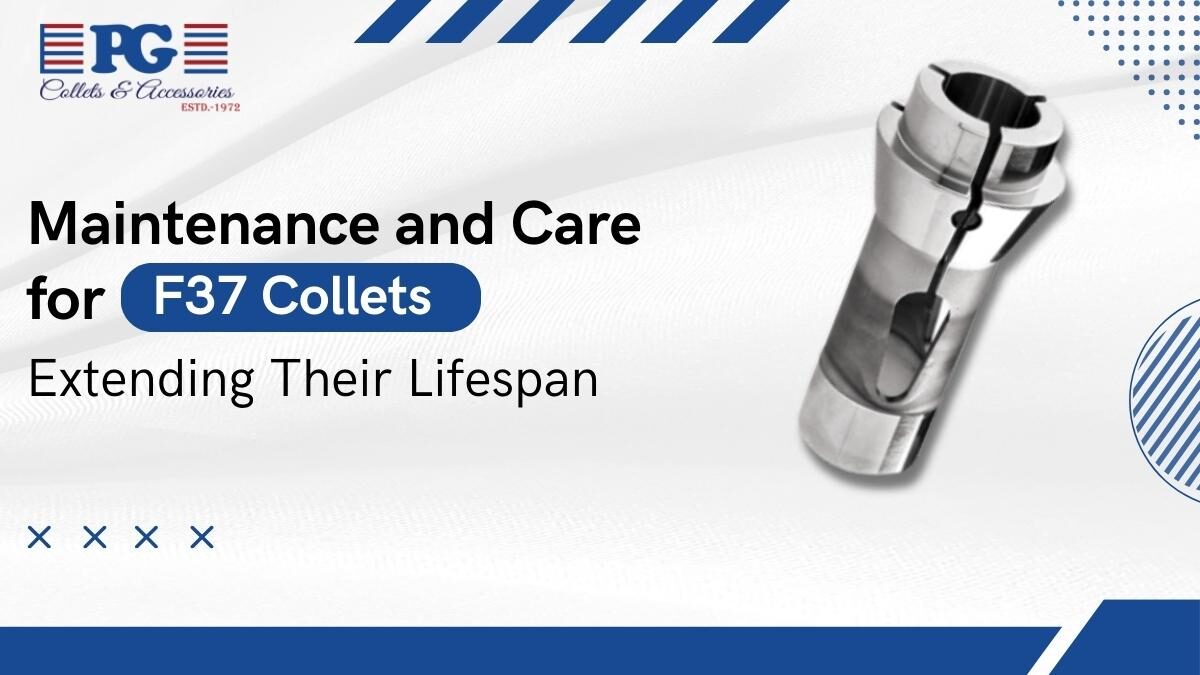In CNC milling operations, F37 collet plays a pivotal role, in ensuring accurate and secure clamping of cutting tools. As with any precision tool, proper maintenance and care are paramount for F37 collets to deliver optimal performance and extend their lifespan. This blog post delves into the essential practices for maintaining and caring for F37 collets, maximizing their value, and keeping your milling operations running smoothly.
Understanding the Significance of Proper Maintenance
F37 collets face significant forces and wear during milling operations. Over time, these factors contribute to collet fatigue, diminishing clamping force, and potentially tool slippage. Proper maintenance mitigates these issues, preserving the collet’s integrity and ensuring consistent, reliable tool performance.
Cleaning and Inspection: A Crucial Step
Regular cleaning is indispensable for maintaining the precision and effectiveness of F37 collets. Debris, swarf, and coolant residue can accumulate on the collet surfaces, hindering its clamping ability and potentially causing damage. Following each use, meticulously clean the collet using a soft brush or cloth, removing any visible debris or foreign particles.
A thorough inspection of the collet is essential to identify any signs of wear or damage, such as cracks, dents, or excessive wear on the clamping surfaces. The collet should be promptly replaced if any damage is detected to prevent potential tool slippage or breakage.
The Importance of Proper Lubrication
Lubrication plays a critical role in reducing friction and wear on F37 collets. Employ a high-quality lubricant specifically designed for collets, applying it sparingly to the collet’s clamping surfaces and threads. Regular lubrication extends the collet’s lifespan and maintains smooth operation.
Storage Practices: Protecting Your Collets
When not in use, proper storage practices safeguard F37 collets from damage and maintain their precision. Utilize designated collet storage racks or cases to keep them organized and protected from dust, debris, or accidental knocks. Avoid storing collets in drawers or toolboxes where they may come into contact with other tools or debris.
Handling and Usage: A Delicate Balance
Proper handling and usage practices significantly extend the lifespan of F37 collets. Avoid overtightening the collet when clamping tools, as this can exert excessive stress and lead to premature wear. Adhere to the recommended tightening torque specified by the collet manufacturer.
When inserting or removing cutting tools, handle the collet with care, avoiding excessive force or abrupt movements. Employ a collet chuck wrench designed for the specific collet size to prevent damage to the collet’s threads or clamping surfaces.
Implementing a Preventive Maintenance Schedule
To ensure optimal performance and longevity, establish a regular preventive maintenance schedule for your F37 collets. This schedule should encompass regular cleaning, inspection, lubrication, and adherence to proper handling guidelines. Incorporating these practices into your routine will help to prevent potential issues and extend the lifespan of your collets.
Conclusion: A Commitment to Precision and Performance
By diligently following proper maintenance and care practices, you can significantly extend the lifespan of your F37 collets, maximizing their value and ensuring consistent, reliable tool performance in your CNC milling operations. Regular cleaning, inspection, lubrication, proper handling, and a preventive maintenance schedule are key to maintaining the integrity and precision of these essential collet components. Investing in proper collet maintenance is an investment in the long-term success of your milling operations.


